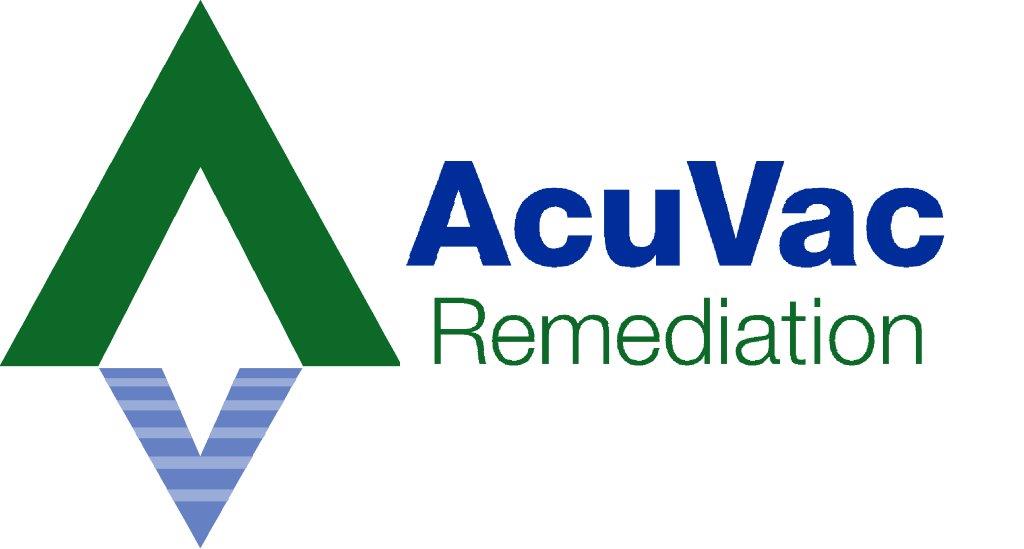METHODOLOGY
The primary purpose of a Pilot Test is to generate, record and report accurate and useful data from a short-term test of a contaminated site. AcuVac’s objective is to provide a precision Pilot Test whereby the radius of influence can be accurately projected. This is necessary to determine the feasibility of a long-term remedial or Corrective Action Plan (CAP). Tests have been conducted where the soil and groundwater were contaminated with almost every known Volatile Organic Compound (VOC), including those classified as LNAPL (Light Non-Aqueous Petroleum Liquids such as gasoline or condensate), NAPL (Non-Aqueous Petroleum Liquids, including crude oil) and DNAPL (Dense Non-Aqueous Petroleum Liquids such as chlorinated ethenes).
Events, which are similar to Pilot Tests as far as removal of VOCs are concerned, are also conducted but are designed as short term remedial processes that maximize the contaminant recovery, usually lasting from 8 to 24 hours, or up to 7 days on a monthly or quarterly schedule.
THE PROCESS
Since 1991, AcuVac has engineered many changes in equipment and methodology to provide the most accurate recording of data, recognition of the inconsistencies and deviations, and precise monitoring of all parameters to back-up the information. These tests and operations have been conducted, quite possibly, in more variations of subsurface soils-including wet or dry, low permeability soils (silts, clays and tills); high permeability soils; groundwater levels varying from 1 ft to over 300 ft; LNAPL and NAPL levels from a sheen to over 30 ft and DNAPL from many different formations. Well sizes have varied from 1/4 inch copper tubing to 12 inch PVC or steel casings. The tests and operations have been conducted from near sea level, to altitudes over 10,000 ft and in weather conditions of blizzards near zero to desert conditions where temperatures reach 120°F. If unrecognized, these outside forces and variables can greatly skew test data. An extraordinarily large data bank has been established along with the experience to recognize and adjust for the many variables that affect Pilot Testing.
EQUIPMENT
AcuVac has custom designed mobile units that are self-contained, requiring no outside electrical connections. The power and vacuum are provided by an internal combustion engine. The primary fuel source is supplied by the volatilized vapors of the contaminant. Supplemental fuel is supplied from the on board propane tanks on the unit. Three catalytic converters treat the exhaust gases to meet air quality standards.
In addition, the following equipment is carried on-site:
Magnehelic or capsuhelic gauges (ranging from 1.0 to 300"H2O).
Digital manometers and expandable well plugs to fit all monitoring wells.
Instrumentation includes HORIBA 544GE gas analyzers that will record hydrocarbon concentrations up to 100,000 ppmv, CO2%, and CO% as well as an O2/H2S analyzer.
YSI Optical Dissolved Oxygen meters with cable lengths up to 100 meters.
Solinst interface meters (100 ft and 250 ft tapes).
Redi-Flo 2 in-well pumps with leads up to 250 ft.
Liquid flow meters that record gallons per minute and total gallons pumped.
In-Situ data loggers with leads up to 180 ft.
Honda 3000 120v generators.
V-1 vacuum boxes to collect influent vapor samples from an extraction well while under vacuum.
The AcuVac System contains various operational equipment, including pressure and flow gauges, and instrumentation. The truck carries tools, drills, pipe connections (galvanized and PVC), flexible tubing and pressure hoses on board at all times. All test data is recorded on customized forms designed to provide all required test data to the Project Manager.
CAPACITY
As shown in the photo, AcuVac has multiple mobile units that can be used in conjunction with each other on a project to enhance the recovery process. In this case, a significant amount of gasoline had collected below a major intersection in a mid-size city. Rather than run three consecutive 24 hour events from the three recovery wells, AcuVac recommended that a single 24 hour event be performed on each of the wells simultaneously. AcuVac's three mobile units were positioned on three of the corners of the intersection. This effectively created a liquid depression at the intersection, thus recovering a higher percentage of liquid and vapor gasoline. The liquid effluent was collected in a stand-by tank truck, and influent gasoline vapors were burned in the internal combustion engine as fuel.


